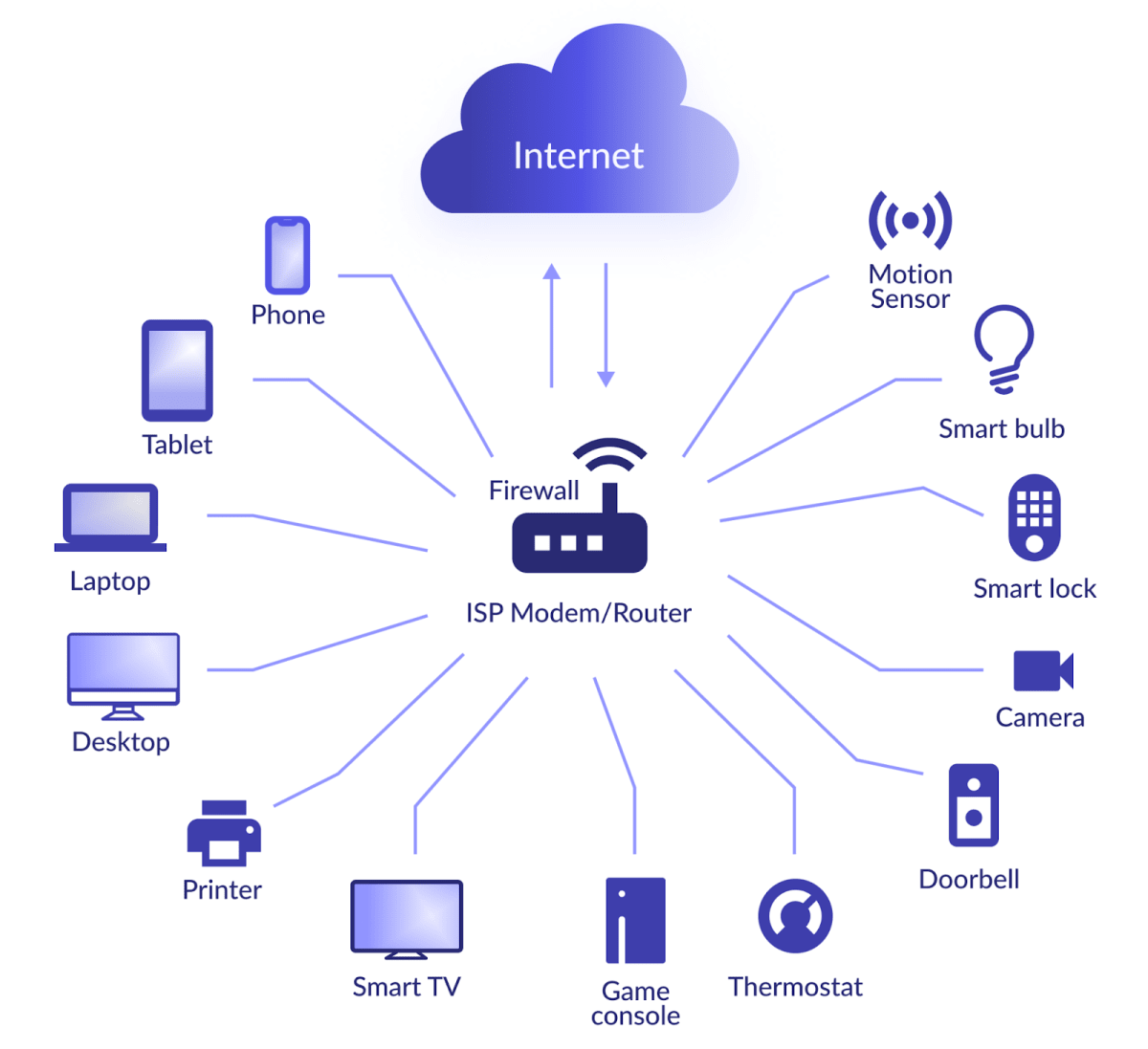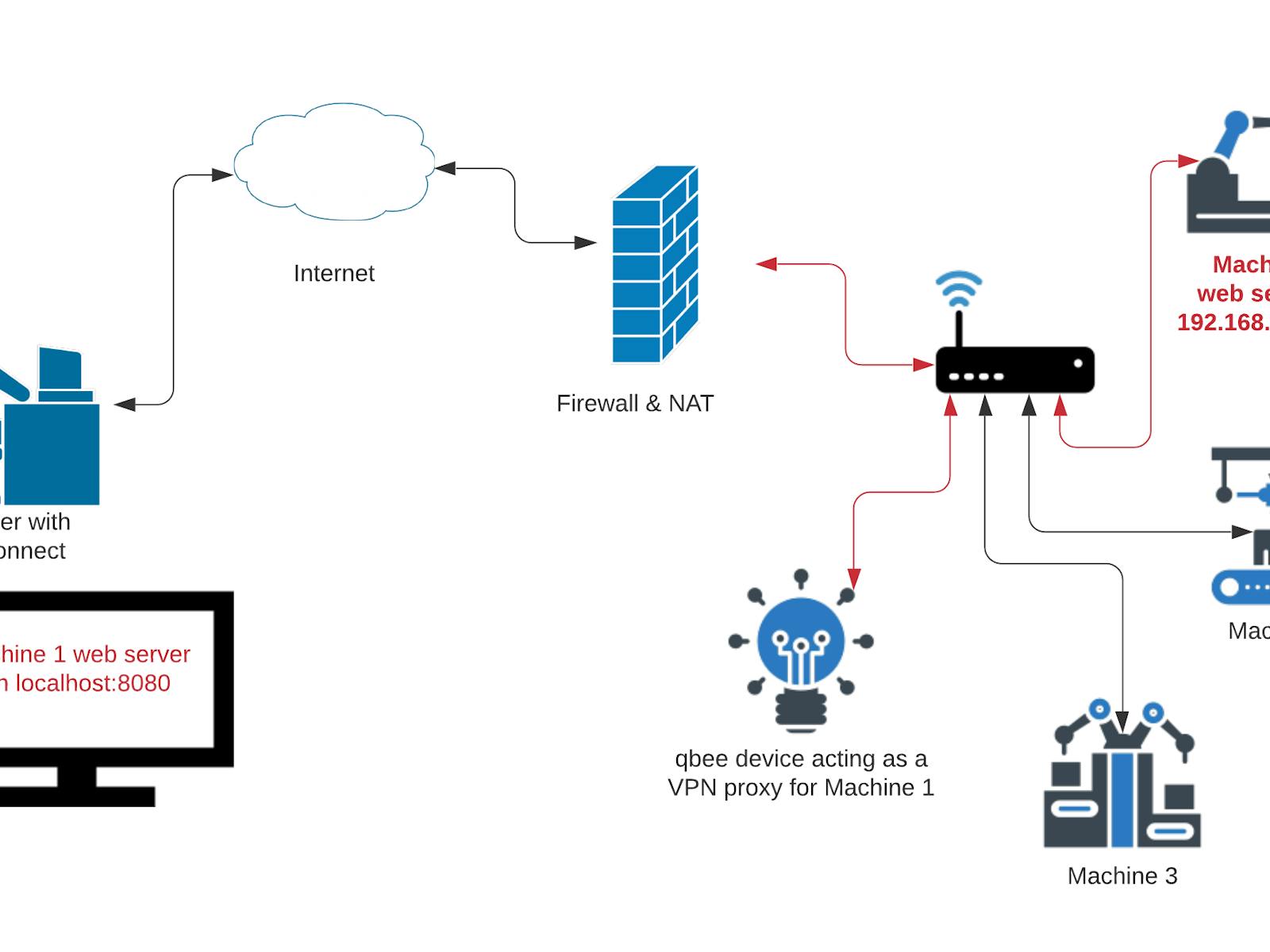Best Remote IoT Firewall Examples For Keeping Your Devices Safe
Keeping our connected devices safe, especially those far away, is a really big deal these days. With so many things talking to each other, from smart home gadgets to factory sensors, it's pretty clear that security can't be an afterthought. You know, like, you wouldn't leave your front door wide open, right? So, protecting your remote IoT devices from unwanted visitors is just as important.
Finding the "best" remote IoT firewall examples can feel a bit like picking your favorite flavor of ice cream when you have a whole shop to choose from. Is it the one that offers everything, or the one that fits your exact needs? We often say "I like chocolate best," but when we're choosing from specific options, it becomes "I like vanilla the best" among the choices available. So, what's truly "best" for your particular setup?
This article will look at some top-notch ways to protect your internet-connected things that are out of arm's reach. We'll explore what makes a firewall good for these special devices and share some types of solutions that are doing a great job right now. It's about helping you figure out what was the best choice for this purpose, or what was best to choose for this purpose, you know, for your own unique situation.
- How Much Does Patience Wolfe Make
- Subhashree Sahu Viral Video
- Pinay Scandal News 2024 Philippines
- Best Remoteiot Device Platforms
- V3 Vegamovies.bitbucket.io
Table of Contents
- What Makes an IoT Firewall Special?
- Key Features to Look for in Remote IoT Firewalls
- Top Remote IoT Firewall Examples
- Choosing the Right Firewall for Your Needs
- Frequently Asked Questions About IoT Firewalls
What Makes an IoT Firewall Special?
When you think about firewalls, your mind might go to the big ones protecting office computers. But IoT devices are a different sort of animal, so, they need a different kind of guard. These little gadgets often have less computing power, which means they can't run super heavy security programs. Also, they use many different ways to talk to each other, and some of these ways are quite old, you know, and not as secure.
A regular firewall might just block or allow traffic based on simple rules. For IoT, though, you need something that really understands the tiny messages these devices send. It's like, you know, understanding a secret code instead of just seeing a letter. This helps spot weird activity that a normal firewall might miss, and that's pretty important.
The "best" for an IoT firewall, then, isn't just about being strong. It's about being smart and light on its feet. It needs to work well with limited resources, yet still provide strong protection. This is where the specific features really start to matter, as a matter of fact.
Key Features to Look for in Remote IoT Firewalls
When you're trying to find the best remote IoT firewall examples, there are a few key things to keep an eye out for. These features help make sure your distant devices are truly safe, and that's really what we want, right?
Network Segmentation
Think of network segmentation as putting up separate fences within your property. You might have one fence for your garden, another for your pets, and so on. In the same way, network segmentation means dividing your network into smaller, isolated sections. This way, if one IoT device gets compromised, the bad guys can't easily jump to other parts of your network. It's like, you know, containing a small fire before it spreads everywhere. This is quite a good strategy.
This feature is super important for IoT because many devices are not as secure as your main computers. Keeping them separate means a problem with one device won't take down your whole system. It's a fundamental way to reduce risk, actually, and it helps a lot.
Deep Packet Inspection (DPI)
Deep Packet Inspection, or DPI, is a bit like a super-smart customs agent. Instead of just checking if a package has the right address, it actually opens the package and looks inside to see what's in it. For network traffic, this means the firewall doesn't just look at where data is coming from or going. It looks at the actual content of the data packets. This helps it spot malicious code or unusual commands that might be hidden within seemingly normal traffic. It's pretty cool, you know, how it works.
This is especially good for IoT because many attacks try to trick devices using their own specific language. A firewall with DPI can understand these languages and block anything that looks suspicious, even if it's coming from an allowed source. It provides a deeper layer of security, you know, which is often needed for these unique devices.
Intrusion Detection/Prevention Systems (IDS/IPS)
Imagine having a security guard who not only watches for trouble but also steps in to stop it. That's what IDS/IPS does. An Intrusion Detection System (IDS) is like an alarm system; it spots suspicious activity and alerts you. An Intrusion Prevention System (IPS) goes a step further; it actively blocks or stops the suspicious activity before it can cause harm. It's about being proactive, you know, which is always better than reacting later.
For remote IoT devices, having an IDS/IPS means constant vigilance. These systems can recognize patterns of attack that are common for IoT devices and immediately shut them down. This is very helpful when you can't be there to monitor everything yourself, and that's often the case with remote setups, right?
Secure Remote Access
Since your IoT devices are "remote," you'll need a way to manage them from afar. Secure remote access means you can connect to your devices or their firewall without opening up new risks. This often involves using things like Virtual Private Networks (VPNs) or other encrypted connections. It's like having a secret, locked tunnel to your devices. That, you know, keeps everything private.
Without secure remote access, managing your distant IoT setup could create a weak spot for attackers. The firewall should make it easy and safe for you to check on things, update settings, or troubleshoot problems, even if you're miles away. It's a critical piece of the puzzle, in a way, for any remote system.
Centralized Management
If you have many IoT devices spread out, managing each one individually would be a nightmare. Centralized management means you can control all your firewalls and devices from one single place. It's like having one main control panel for everything. This makes it much easier to set rules, monitor activity, and respond to threats across your entire network. This is pretty much essential for larger setups, you know, where you have lots of devices.
This feature saves a lot of time and effort. It also helps ensure that all your devices have the same level of protection, reducing the chance of something being missed. It makes keeping your whole system safe a much simpler task, actually, which is always a good thing.
Top Remote IoT Firewall Examples
When we talk about the best remote IoT firewall examples, it's not about one single product that wins for everyone. It's more about categories of solutions that work well for different situations. Just like, you know, "the best car" depends on whether you need a family car, a sports car, or a truck. So, here are some types of solutions that often come up when discussing strong IoT security.
One common type of solution involves specialized industrial firewalls. These are built to handle the tough conditions and unique communication methods found in factories or energy grids. They are often rugged and can withstand harsh environments. They prioritize uptime and very specific traffic rules, which is really important for critical infrastructure. You'll find these solutions often come with their own management systems, too, for controlling many devices at once. They are designed for very specific, demanding uses, you know, where reliability is key.
Another example comes from cloud-managed security platforms. These solutions don't always use a physical box on site. Instead, they use software that lives in the cloud and connects to your IoT devices. This means you can manage everything from anywhere with an internet connection. They often offer advanced threat detection and can scale up or down easily as your number of devices changes. This kind of setup is very flexible, and that's a big plus for many businesses, you know, that need to grow quickly.
Then there are IoT gateways with built-in firewall capabilities. These are physical devices that act as a bridge between your IoT sensors and the internet. Many of them include basic to advanced firewall features right inside. They can filter traffic, provide secure connections, and sometimes even offer local processing of data. For smaller deployments or specific remote sites, these can be a very practical choice. They offer a good balance of security and ease of use, you know, for more contained systems.
Finally, some consumer-grade routers are starting to include more advanced IoT security features. While they might not offer the same depth as industrial or enterprise solutions, they can provide a decent first line of defense for smart homes or small offices with a few connected devices. These are usually simpler to set up and manage, and that's a definite benefit for home users. They are, you know, a good starting point for basic protection.
Each of these types has its strengths, and the "best" one depends on your specific needs, your budget, and the kind of devices you're trying to protect. It's about finding the right fit, you know, for your particular circumstances.
Choosing the Right Firewall for Your Needs
Deciding on the best remote IoT firewall examples for your situation involves thinking about a few things. It's not about finding a universally "best" option, but rather what is the best choice for this purpose, meaning your specific purpose. What was best to choose for this purpose might be different for someone else, you know, and that's totally fine.
First, consider the number and type of IoT devices you have. Are they critical industrial sensors, or are they smart light bulbs in a home? The level of protection needed will vary greatly. A factory floor, for instance, needs far more robust and specialized security than a smart home, obviously.
Next, think about your budget. Security solutions come at different price points, and sometimes, a higher price does mean more features and stronger protection. However, you don't always need the most expensive option. It's about finding value that matches your risk level, you know, and what you can afford.
Also, consider your own technical know-how or the expertise of your team. Some firewall solutions require a lot of technical skill to set up and manage, while others are much more user-friendly. If you're not a security expert, a simpler, more automated solution might be the best way to go, as a matter of fact.
Finally, think about how your system might grow in the future. Will you be adding many more devices? Will they be in new, distant locations? A good firewall solution should be able to scale with your needs without requiring a complete overhaul later on. The best way to use the best way is to follow it with an infinitive, so the best way to ensure future security is to pick a flexible system now.
Looking at the available choices and thinking about these points will help you pick what's truly "the best" for you. You know, it's about making an informed decision that really works.
Frequently Asked Questions About IoT Firewalls
What is an IoT firewall?
An IoT firewall is a special kind of security system designed to protect internet-connected devices, like smart sensors or cameras. It acts like a guard, controlling what information goes in and out of these devices. Unlike regular firewalls, it's built to handle the unique ways IoT devices communicate and their often limited computing power. It helps keep them safe from unwanted access or attacks, you know, and that's its main job.
How do I secure my remote IoT devices?
Securing your remote IoT devices involves several steps. First, you need a good IoT-specific firewall to control network traffic. Then, you should use strong, unique passwords for all your devices and change them regularly. Keeping device software updated is also super important, as updates often fix security holes. Using network segmentation to isolate IoT devices from your main network is a really good idea, too. Finally, making sure you have secure remote access methods, like VPNs, helps when you need to manage them from afar, you know, to keep everything locked down.
Are consumer routers enough for IoT security?
For basic home use with just a few smart devices, a modern consumer router with some security features might offer a starting level of protection. However, for more serious setups, like a business with many IoT devices or critical systems, consumer routers are typically not enough. They often lack the specialized features needed for deep inspection, network segmentation, or advanced threat detection that IoT firewalls provide. So, for anything beyond very simple needs, you'll want something more robust, you know, to be truly safe.
For more general information about network security, you could look at resources from organizations like the National Institute of Standards and Technology (NIST), for instance. They have a lot of good stuff.
Learn more about IoT security on our site, and for more specific advice, you can also check out this page /iot-device-protection-guide.

Remote IoT Firewall Examples: A Comprehensive Guide To Securing Your

Unlocking IoT Potential: RemoteIoT Behind Firewall Examples

Dual Firewalls to separate DMZ's and internal LANs at home... bad idea